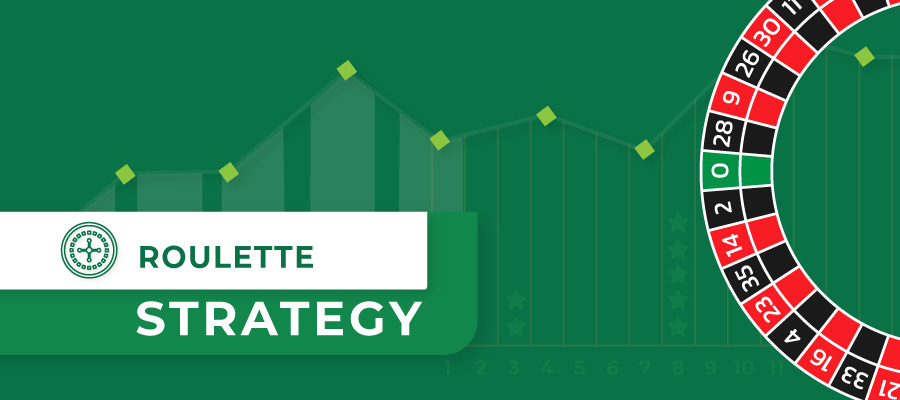Roulette is a game of chance that has captivated players for centuries. Its allure lies in the spinning wheel, the bouncing ball, and the anticipation of where it will land. But beyond the thrill, understanding the nuances of betting can significantly impact your experience. Inside and outside bets, odds, strategies, and the house edge all play crucial roles in shaping your approach to the game. Whether you’re a novice or a seasoned player, grasping these elements can enhance your gameplay. This post delves into the intricacies of roulette, offering insights into various betting strategies, the differences between American and European wheels, and how professional gamblers approach the game. By the end, you’ll have a comprehensive understanding of how to manage your bankroll and potentially improve your chances of winning. Let’s explore the fascinating world of roulette and uncover the secrets behind its enduring popularity.
How do inside bets differ from outside bets in roulette?
Inside bets and outside bets are two fundamental categories in roulette, each offering distinct advantages and risks. Inside bets are placed on specific numbers or small groups of numbers within the numbered grid on the roulette table. These bets include straight-up bets on a single number, split bets on two adjacent numbers, street bets on three numbers in a row, and corner bets on four numbers forming a square. The allure of inside bets lies in their high payout potential. However, they come with a higher risk due to the lower probability of winning.
On the other hand, outside bets cover larger groups of numbers and are placed outside the numbered grid. These bets include red or black, odd or even, and high or low numbers. Outside bets offer lower payouts compared to inside bets, but they come with a higher probability of winning. This makes them appealing to players who prefer a more conservative approach. Understanding the differences between inside and outside bets is crucial for developing a betting strategy that aligns with your risk tolerance and desired payout potential.
What are the odds of winning with inside bets?
Inside bets in roulette offer the allure of high payouts, but they come with lower odds of winning. The odds vary depending on the specific type of inside bet you choose. A straight-up bet, which involves betting on a single number, offers the highest payout of 35 to 1. However, the odds of winning this bet are only 2.63% on a European wheel and 2.63% on an American wheel due to the presence of the double zero.
Split bets, which cover two adjacent numbers, offer a payout of 17 to 1. The odds of winning a split bet are slightly higher, at 5.26% on a European wheel and 5.26% on an American wheel. Street bets, covering three numbers in a row, have a payout of 11 to 1, with odds of 7.89% on a European wheel and 7.89% on an American wheel. Corner bets, covering four numbers, offer a payout of 8 to 1, with odds of 10.53% on a European wheel and 10.53% on an American wheel. While inside bets can be enticing due to their potential for significant payouts, players must weigh the risks and consider their overall strategy.
Exploring the benefits of outside bets in roulette
Outside bets in roulette are favored by players who prefer a more conservative approach. These bets cover larger groups of numbers, offering higher odds of winning compared to inside bets. One of the primary benefits of outside bets is their simplicity. Players can choose from options like red or black, odd or even, and high or low numbers. These bets have nearly a 50% chance of winning, making them appealing to those who want to extend their gameplay and minimize losses.
The payouts for outside bets are lower, typically 1 to 1, but the increased probability of winning can lead to more consistent returns. This makes outside bets ideal for players who enjoy a steady, less volatile gaming experience. Additionally, outside bets allow players to manage their bankroll more effectively, as the lower risk can help preserve funds over a longer period. By understanding the benefits of outside bets, players can tailor their strategies to align with their risk tolerance and gaming preferences.
Can strategic betting improve your chances in roulette?
Strategic betting in roulette can enhance your gaming experience, but it’s essential to understand that roulette is ultimately a game of chance. No strategy can guarantee consistent wins, but certain approaches can help manage risk and potentially improve your odds. One popular strategy is the Martingale system, which involves doubling your bet after each loss. The idea is that a win will eventually occur, recouping previous losses and yielding a profit. However, this strategy requires a substantial bankroll and carries the risk of hitting table limits.
Another approach is the Fibonacci system, which uses a sequence of numbers to determine bet sizes. This strategy is less aggressive than the Martingale and can help manage losses more effectively. The D’Alembert system is another option, where players increase their bet by one unit after a loss and decrease it by one unit after a win. This strategy aims to balance wins and losses over time. While strategic betting can add structure to your gameplay, it’s crucial to remember that roulette outcomes are random, and no strategy can overcome the house edge.
What are the most popular roulette strategies?
Roulette strategies are designed to help players manage their bets and potentially improve their odds. The Martingale strategy is one of the most well-known, involving doubling your bet after each loss. While it can be effective in theory, it requires a large bankroll and carries the risk of hitting table limits. The Fibonacci strategy is another popular choice, using a sequence of numbers to determine bet sizes. This approach is less aggressive than the Martingale and can help manage losses more effectively.
The D’Alembert strategy is a more conservative option, where players increase their bet by one unit after a loss and decrease it by one unit after a win. This strategy aims to balance wins and losses over time. The Labouchere system involves setting a sequence of numbers and adjusting bets based on wins and losses. This strategy requires careful tracking and can be complex for beginners. While these strategies can add structure to your gameplay, it’s important to remember that roulette is a game of chance, and no strategy can guarantee consistent wins.
Understanding the house edge in roulette
The house edge in roulette is a crucial factor that influences your chances of winning. It represents the casino’s advantage over players and varies depending on the type of roulette wheel. In European roulette, the house edge is 2.70%, while in American roulette, it increases to 5.26% due to the presence of the double zero. The house edge is built into the game’s design, ensuring that the casino maintains a profit over time.
Understanding the house edge can help players make informed decisions about their bets. While it cannot be eliminated, players can choose games with a lower house edge to improve their odds. For example, opting for European roulette over American roulette can reduce the house’s advantage. Additionally, focusing on outside bets with higher odds of winning can help mitigate the impact of the house edge. By being aware of the house edge, players can develop strategies that align with their risk tolerance and gaming preferences.
How to manage your bankroll while playing roulette
Effective bankroll management is essential for a successful roulette experience. It involves setting a budget, determining bet sizes, and knowing when to walk away. Start by setting a budget for your roulette session and stick to it. This ensures that you don’t spend more than you can afford to lose. Divide your bankroll into smaller units to determine your bet sizes. This approach helps extend your gameplay and minimizes the risk of significant losses.
It’s also important to set win and loss limits. Decide in advance how much you’re willing to win or lose before ending your session. This prevents chasing losses and helps you maintain control over your bankroll. Additionally, consider using a betting strategy that aligns with your risk tolerance. Whether you prefer a conservative approach with outside bets or a more aggressive strategy with inside bets, managing your bankroll effectively can enhance your roulette experience and increase your chances of success.
What is the Martingale strategy in roulette?
The Martingale strategy is a popular betting system used in roulette. It involves doubling your bet after each loss, with the aim of recouping previous losses and making a profit when a win eventually occurs. The idea behind the Martingale strategy is that a win will eventually happen, allowing you to recover your losses and gain a profit equal to your original bet. However, this strategy requires a substantial bankroll, as consecutive losses can quickly deplete your funds.
One of the main risks of the Martingale strategy is hitting the table limits, which can prevent you from doubling your bet further. Additionally, the strategy assumes that you have an unlimited bankroll, which is rarely the case. While the Martingale strategy can be effective in theory, it’s important to approach it with caution and be aware of its limitations. Players should consider their risk tolerance and bankroll size before implementing this strategy in their roulette gameplay.
Comparing American and European roulette wheels
American and European roulette wheels differ in their design and house edge. The American wheel features 38 pockets, including numbers 1 to 36, a single zero, and a double zero. This additional double zero increases the house edge to 5.26%, making it less favorable for players. In contrast, the European wheel has 37 pockets, with numbers 1 to 36 and a single zero. The absence of the double zero reduces the house edge to 2.70%, offering better odds for players.
The layout of the numbers on the wheel also differs between the two versions. While the order of numbers may seem random, it is designed to balance the distribution of high and low numbers, as well as red and black pockets. Players often prefer European roulette due to its lower house edge, which increases their chances of winning. Understanding the differences between American and European roulette wheels can help players make informed decisions about which version to play.
How do professional gamblers approach roulette?
Professional gamblers approach roulette with a combination of strategy, discipline, and risk management. They understand that roulette is a game of chance, and no strategy can guarantee consistent wins. However, they use betting systems to manage their bankroll and minimize losses. Professionals often favor outside bets due to their higher odds of winning, allowing for a more consistent return on investment.
Discipline is a key component of a professional gambler’s approach. They set strict win and loss limits and adhere to them, preventing emotional decisions and chasing losses. Additionally, they choose games with a lower house edge, such as European roulette, to improve their odds. Professional gamblers also continuously analyze their gameplay, adjusting their strategies based on past performance and outcomes. By maintaining a disciplined and strategic approach, professional gamblers can enhance their roulette experience and increase their chances of success.
Conclusion
Roulette is a captivating game that combines chance and strategy. Understanding the differences between inside and outside bets, the odds of winning, and the house edge can enhance your gameplay. While no strategy can guarantee consistent wins, strategic betting and effective bankroll management can improve your experience. Whether you prefer the Martingale system or a more conservative approach, aligning your strategy with your risk tolerance is key. By choosing games with a lower house edge and setting win and loss limits, you can enjoy a more rewarding roulette experience. Remember, roulette is ultimately a game of chance, and the thrill lies in the unpredictability of the spinning wheel.


